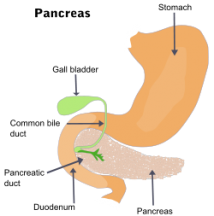Your Shopping Cart Is Empty
Gall Bladder
The gallbladder is an organ located in the area just below the liver, near the beginning of the small intestine (also known as doudenum) where it connects to the stomach. The biliary tract connects the liver and theduodenum. The gallbladder is a pear-shaped sac that acts as a reservoir for a dark green liquid called bile, which is an important substance in the digestive process. Bile is produced by the liver and stored in the gallbladder until it is needed. There’s approximately 1.5 to 2 ounces of bile (about 50 ml) in the gallbladder at any given time. Bile is released from the gallbladder when fat enters the digestive system.It breaks down fat and neutralizes acids in partly digested food. Historically, bile has often been called “gall,” which is where the name gallbladder originated.Medically speaking, the gallbladder is known as “cholecyst.”
SYMPTOMS OF GALLBLADDER PROBLEMS
People can go for years with digestive symptoms and never realize that they may be related to a gallbladder problem. That’s because they are so inter-related with other digestive symptoms. Constipation is one of the most commonly missed ones. The list provided here may be related to gallbladder but bear in mind that it could also be something else. The first four mentioned I feel are most indicative of gallbladder issues. It is not necessary to have all or many symptoms to have gallbladder problems but the more you have from this list, the more confirmation you have that the gallbladder is involved. Please note that it is still adviseable to consult your doctor for an acurate diagnosis. Gallbladder attack symptoms are listed below

- Pain or tenderness under the rib cage on the right side
- Pain between shoulder blades
- Stools light or chalky colored
- Indigestion after eating, especially fatty or greasy foods
- Nausea
- Dizziness
- Bloating
- Gas
- Burping or belching
- Feeling of fullness or food not digesting
- Diarrhea (or alternating from soft to watery)
- Constipation
- Headache over eyes, especially right
- Bitter fluid comes up after eating
- Frequent use of laxatives
GALLBLADDER ATTACK SYMPTOMS
Please note that if you are in severe pain and particularly if your attack symptoms are accompanied by fever DO SEEK MEDICAL ATTENTION IMMEDIATELY. The following symptoms are typical of a gallbladder attack.
- Moderate to severe pain under the right side of the rib cage
- Pain may radiate through to the back or to the right shoulder
- Severe upper abdominal pain (biliary colic)
- Nausea
- Queasiness
- Vomiting
- Gas
- Burping or belching
- Attacks are often at night
- Attacks often occur after overeating
- Pain will often but not always follow a meal with fats or grease
- Pain may be worse with deep inhalation
- Attacks can last from 15 minutes to 15 hours
